Microsoft Copilot v/s Google Gemini in AI Image Generation
The tremendous success and popularity of ChatGPT have compelled tech giants like Google and Microsoft to develop their own AI competitors. As a result, Microsoft Copilot and Google Gemini have emerged at the forefront of AI innovation, showcasing remarkable capabilities in various domains.
One particularly intriguing aspect of these tools is their ability to generate images from text prompts. In this blog post, I will compare the image generation capabilities of Microsoft Copilot and Google Gemini.
By using the same prompts for both tools, I aim to provide an objective assessment of the quality and aesthetics of the generated images. It is important to note that the opinions expressed in this comparison are strictly personal and may vary from individual to individual.
My focus will be solely on the image generation aspect of these tools, rather than looking into their other language model capabilities. By examining the outputs side by side, I hope to gain insights into the strengths and weaknesses of each tool when generating images.
I will explore various prompts that challenge these tools to generate diverse images, ranging from realistic photos to artistic renderings. I will assess factors such as detail, coherence, and overall visual appeal to determine which tool produces more impressive results.
Microsoft Copilot
Microsoft Copilot is a powerful AI tool that offers a range of capabilities, including image generation. To access this feature, users can visit https://copilot.microsoft.com and log in with their Microsoft account.
Once logged in, users can select the “Designer” option from the available Copilot GPTs. This enables them to not only generate images but also edit them after generation using Microsoft Designer.
The image generation process in Copilot is straightforward. Users simply need to provide a text prompt describing the desired image. Within seconds, Copilot generates four images based on the prompt. Users can then choose the image they prefer and proceed to edit it if desired.
One of the advantages of Copilot is its accessibility. It works seamlessly on both PCs and mobile phones, allowing users to generate images on the go. Additionally, users have the option to download the generated images directly to their devices for further use.
Under the hood, Copilot utilizes DallE3 from OpenAI to power its image generation capabilities. This ensures that the generated images are of high quality and closely align with the provided text prompts.
Microsoft Copilot offers both free and paid versions. For this comparison, I will be using the free version, which provides a sufficient range of features to assess its image generation capabilities.
With its user-friendly interface, quick image generation, and editing capabilities, Microsoft Copilot presents itself as a strong contender in the AI image generation space.
Google Gemini
Google Gemini is another impressive AI tool that has garnered attention. To access Gemini, users need to visit https://gemini.google.com and log in with their Gmail account.
Gemini offers two versions: Gemini and Gemini Advanced. The free version, Gemini, will be the focus of our comparison, while Gemini Advanced is a paid version with additional features.
The image generation process in Gemini is similar to that of Copilot. Users enter a text prompt describing the desired image, and within a matter of seconds, Gemini generates four images based on the prompt.
One notable difference between Gemini and Copilot is that Gemini does not provide built-in image editing capabilities. Users can, however, download the generated images directly to their devices for further manipulation using external tools.
Under the hood, Gemini leverages Google’s Imagen 2 model to generate images. This model is known for its ability to create high-quality images that closely match the given text prompts.
While Gemini may lack some of the editing features found in Copilot, it makes up for it with its speed and the quality of the generated images.
As I proceed with our comparison, I will be using the free version of Gemini to assess its image generation capabilities and compare them with those of Microsoft Copilot.
Google Gemini, with its powerful Imagen 2 model and user-friendly interface, presents itself as a worthy competitor in the AI image generation landscape.
Comparison of Copilot and Gemini
To provide a fair and objective comparison between Microsoft Copilot and Google Gemini, we will use the same prompts for both tools. This will allow us to assess the quality and aesthetics of the generated images on an equal footing.
Prompt 1: Modern Living Room
A realistic photo of a cozy, modern living room interior with stylish furniture and decor.
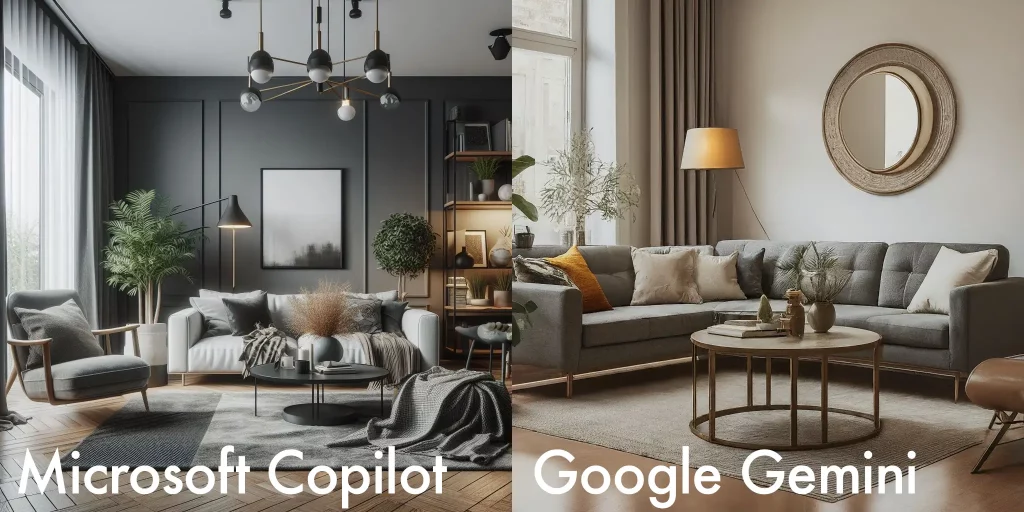
The image generated by Copilot for a modern living room interior is realistic and visually appealing. Gemini’s output for the same prompt is also realistic, but it lacks the same level of detail and aesthetics as Copilot’s image.
In this case, I believe that Copilot’s image is superior to Gemini’s. The image generated by Copilot has a more polished and visually pleasing appearance, making it more engaging and realistic.
Prompt 2: Rustic Cabin
A cozy, rustic cabin in the middle of a snowy forest, with warm light emanating from the windows.
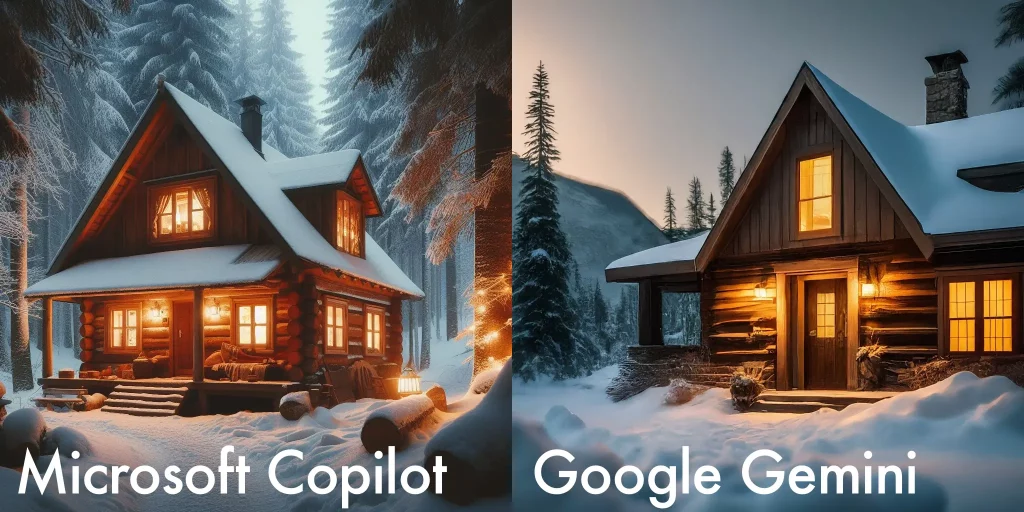
Copilot’s image of a rustic cabin in a snowy forest is so good. The warm light emanating from the windows creates a cozy and inviting atmosphere. Gemini’s output for the rustic cabin prompt is equally impressive.
In this instance, both Copilot and Gemini deliver good results. The images are nearly indistinguishable in terms of quality and aesthetics, making it difficult to declare a clear winner.
Prompt 3: Majestic Dragon
A majestic dragon perched atop a mountain, overlooking a medieval village.
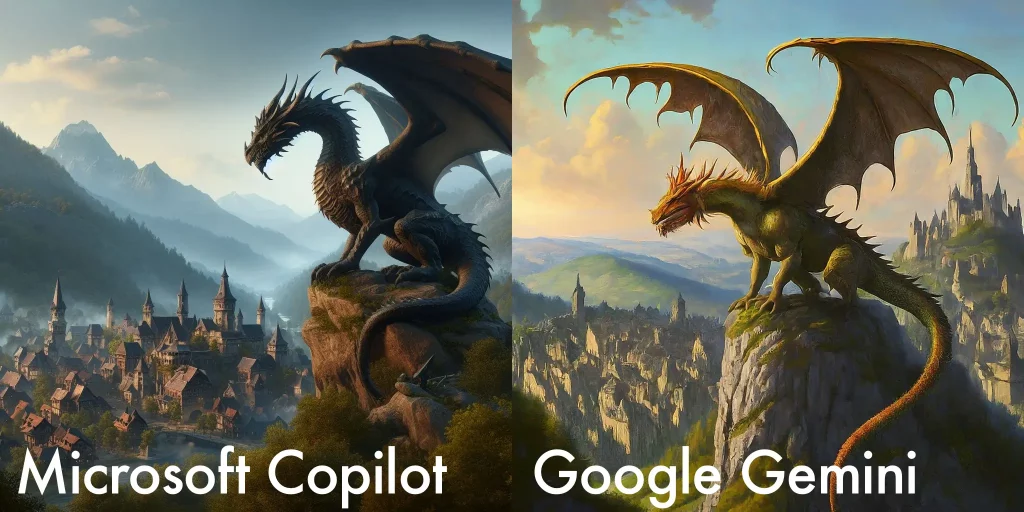
Copilot’s rendering of a majestic dragon perched atop a mountain is stunning. The dragon itself is highly detailed, with intricate scales and a fierce expression. Gemini’s image of the majestic dragon falls short in comparison to Copilot’s. The dragon appears less detailed and somewhat washed out, lacking the same visual impact.
In this case, Copilot’s image is clearly superior. The dragon generated by Copilot is far more impressive in terms of detail, color, and overall aesthetics.
Prompt 4: Mischievous Raccoon
A cartoon character of a mischievous raccoon stealing food from a picnic basket.
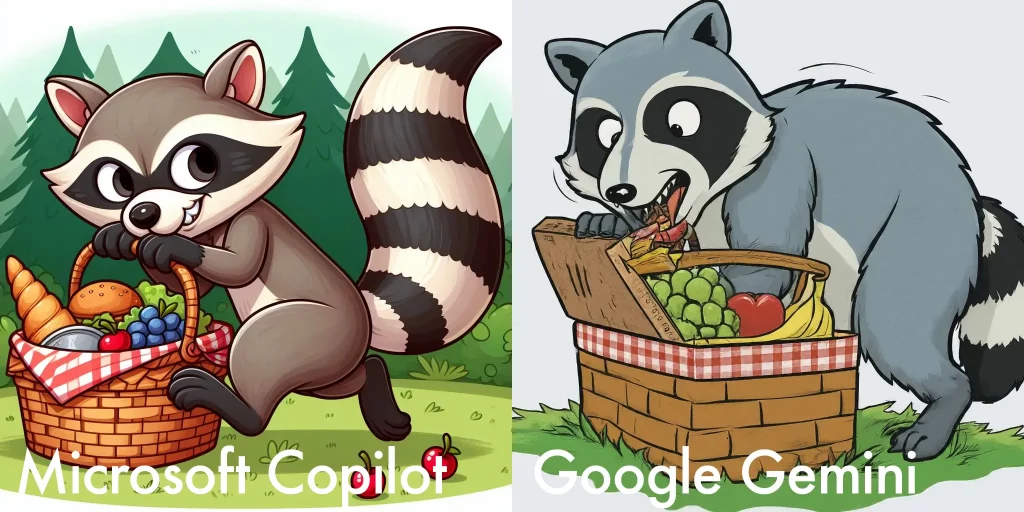
Copilot’s cartoon character of a mischievous raccoon stealing food from a picnic basket is delightful. The raccoon’s expression and pose perfectly capture its playful and sneaky nature. Gemini’s output for the mischievous raccoon prompt is disappointing. The image lacks the charm and character found in Copilot’s rendering.
Copilot wins this round hands down. The raccoon cartoon generated by Copilot is cute, funny, and well-executed, while Gemini’s output falls short in all aspects.
Prompt 5: Charming European Village
A watercolor painting of a charming European village with cobblestone streets and colorful houses.
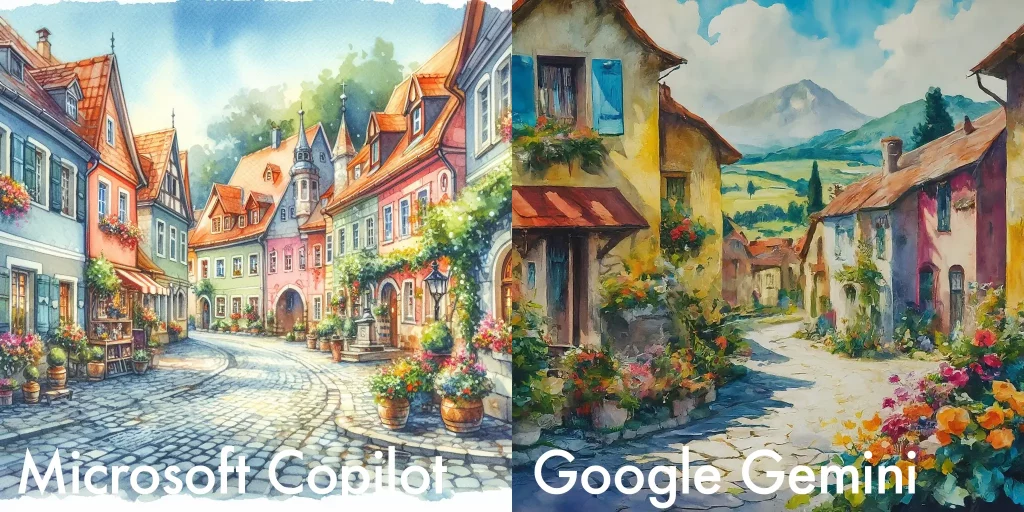
Copilot’s watercolor painting of a charming European village is stunning. The cobblestone streets and colorful houses are beautifully rendered, with a soft and dreamy quality that captures the essence of a watercolor painting.
Gemini’s output for the charming European village prompt is also impressive. The watercolor style is well-executed, with similar attention to detail and color.
Both Copilot and Gemini deliver beautiful watercolor paintings of the European village. While Copilot’s image has a slight edge in terms of overall aesthetics, both tools perform admirably in this category.
Prompt 6: A Futuristic Cityscape
A digital illustration of a futuristic cityscape with sleek, towering skyscrapers.
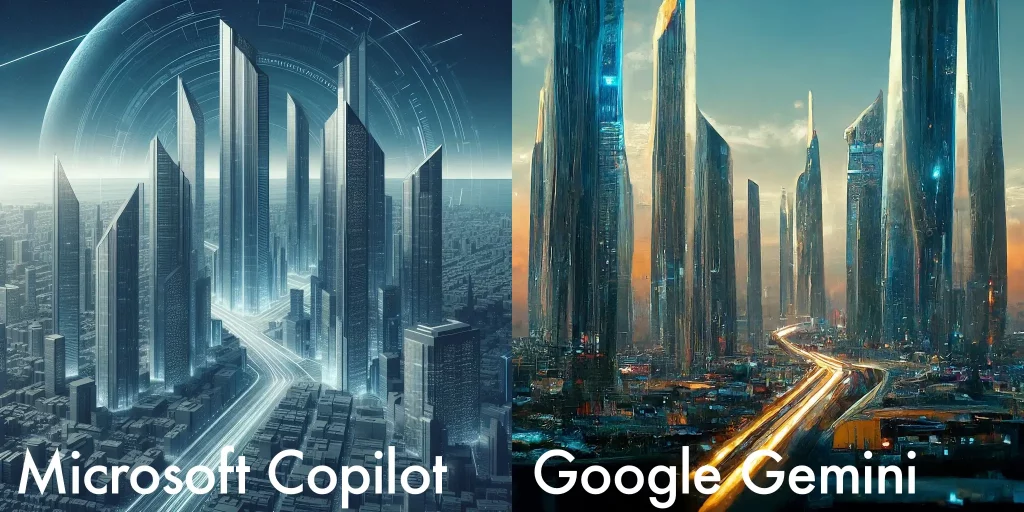
Copilot’s digital illustration of a futuristic cityscape features sleek, towering skyscrapers. However, the image lacks the level of detail and polish one would expect from a high-quality illustration.
Gemini’s output for the futuristic cityscape prompt is similarly underwhelming. The image appears flat and lacks the depth and complexity expected from a futuristic scene.
Neither Copilot nor Gemini deliver particularly impressive results for this prompt. Both images fall short in terms of detail, composition, and overall visual appeal.
Prompt 7: Busy City
A pencil sketch of a busy city street with pedestrians and vehicles.
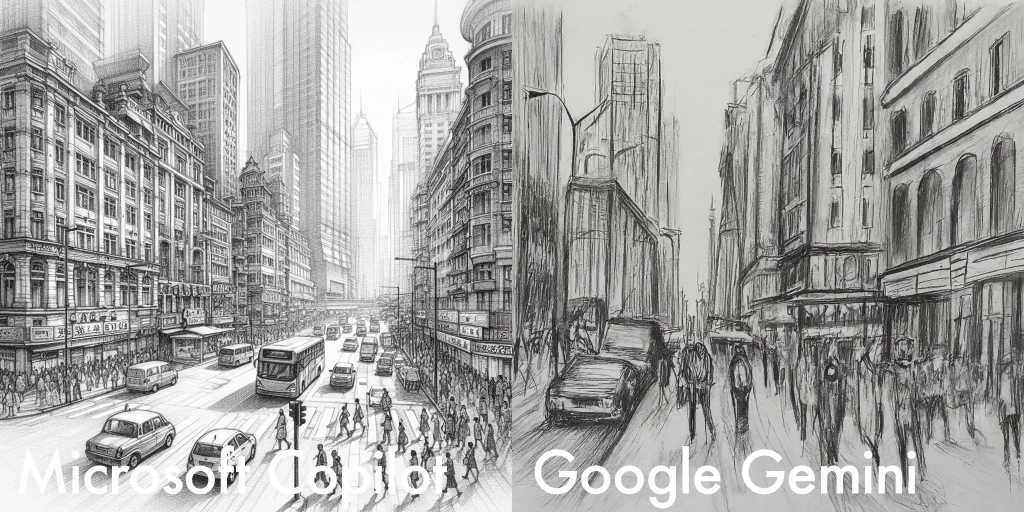
Copilot’s pencil sketch of a busy city street is highly detailed and well-executed. The pedestrians and vehicles are skillfully drawn, capturing the hustle and bustle of a lively city. Gemini’s output
Gemini’s output for the busy city prompt is less impressive. The sketch appears rough and lacks the same level of detail and finesse found in Copilot’s image.
Copilot emerges as the clear winner in this category. The pencil sketch generated by Copilot is far superior to Gemini’s, showcasing better technique, detail, and overall artistic quality.
Prompt 8: Majestic Lion
A realistic photo of a majestic lion in the African savanna during golden hour.
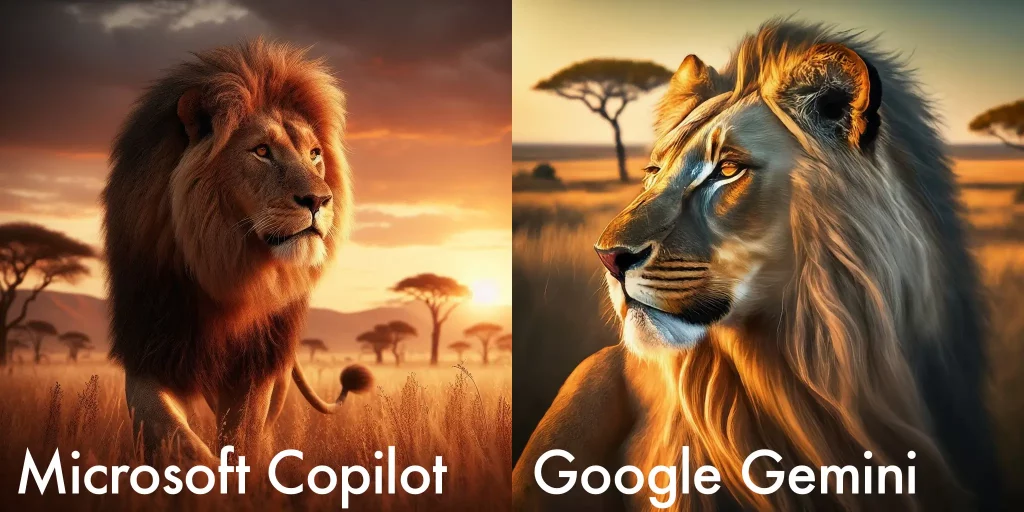
Copilot’s image of a majestic lion in the African savanna is decent but falls short of being truly realistic. The lion’s features are somewhat recognizable, but the overall appearance lacks the fine details and natural look one would expect from a real photograph.
Gemini’s output for the majestic lion prompt is similarly lacking in realism. The lion appears artificial and lacks the majestic presence expected from such a powerful creature.
Neither Copilot nor Gemini manage to create a genuinely realistic image of a majestic lion. While Copilot’s lion is slightly better in terms of overall appearance, both tools struggle to capture the true essence of the animal.
My Takeaways
In this blog post, we have explored the image generation capabilities of two leading AI tools: Microsoft Copilot and Google Gemini. By using the same prompts for both tools and comparing the outputs side by side, we have gained valuable insights into their strengths and weaknesses.
Throughout the comparison, Microsoft Copilot consistently demonstrated superior performance in terms of image quality, detail, and overall aesthetics. Copilot’s ability to generate highly realistic and visually appealing images across various categories, such as modern living rooms, majestic dragons, and charming European villages, sets it apart from its competitor.
Google Gemini, while still an impressive tool, often fell short in comparison to Copilot. Gemini’s outputs sometimes lacked the same level of detail, clarity, and visual impact found in Copilot’s images. However, it is important to note that Gemini did perform well in certain categories, such as the rustic cabin and charming European village prompts.
One notable limitation of Google Gemini is its current inability to generate images of humans, which restricts its versatility and applicability in certain domains. Microsoft Copilot, on the other hand, does not appear to have this limitation, giving it an advantage in terms of usability and potential use cases.
Looking towards the future, there is immense potential for further advancements in AI image generation. As the underlying models and algorithms continue to evolve, we can expect to see even more impressive and diverse images generated from text prompts.
As the field of AI image generation continues to evolve, it will be fascinating to witness the advancements and innovations that emerge from tools like Microsoft Copilot and Google Gemini. The future of visual content creation is undoubtedly exciting, and these tools are at the forefront of this transformative journey.
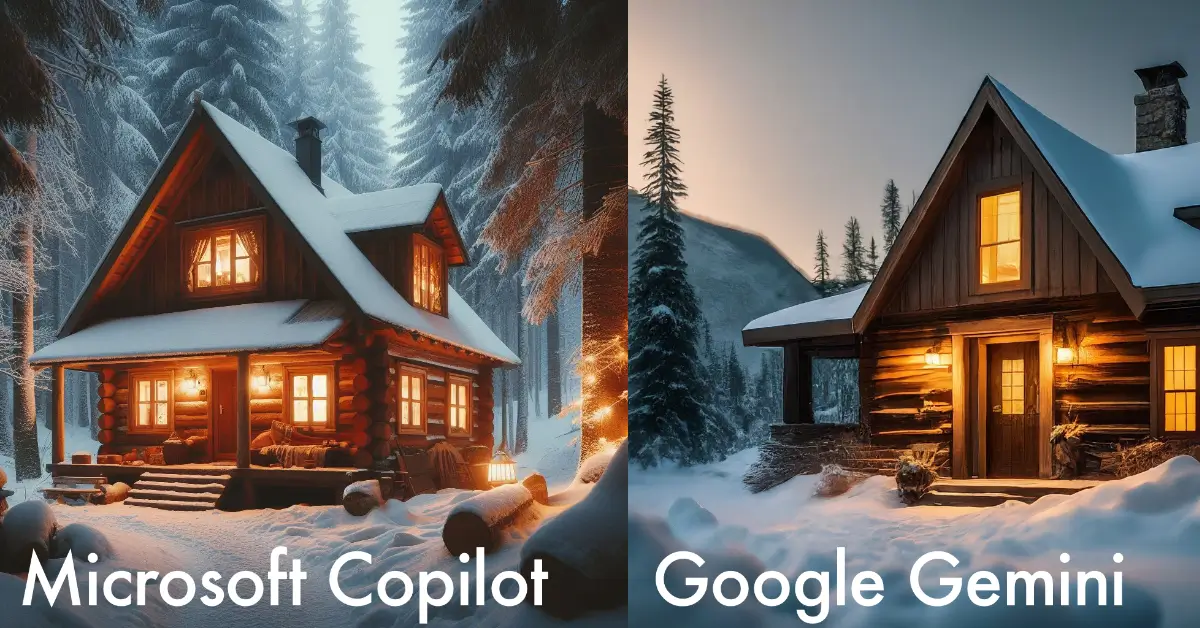
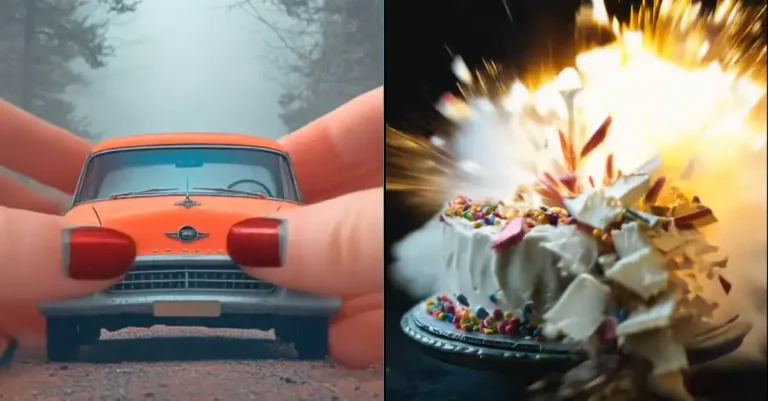
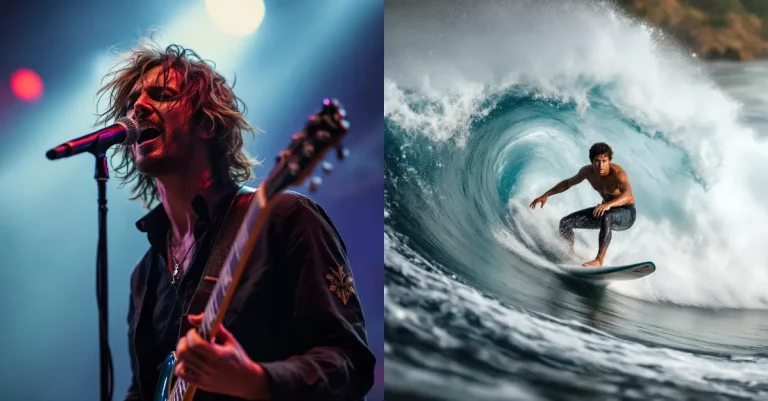
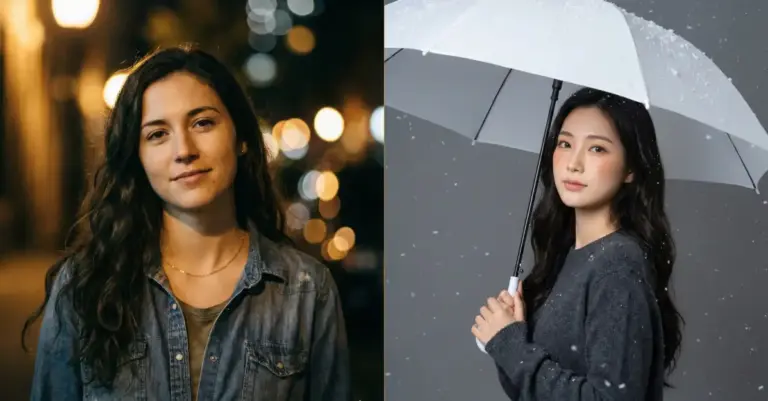
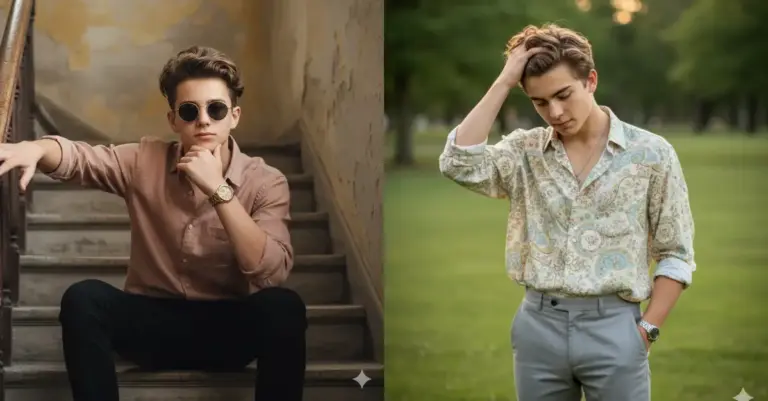
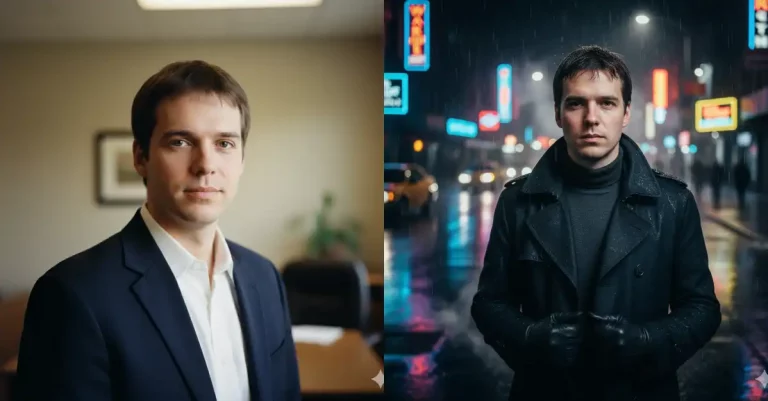
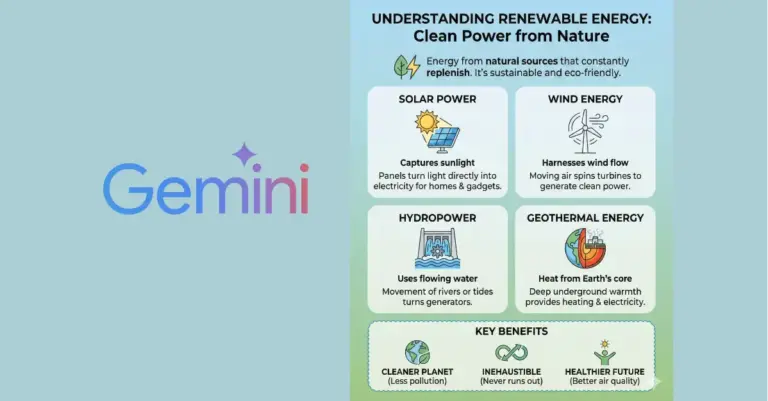
Great, detailed, helpful post. Your blog is good. Thank you.